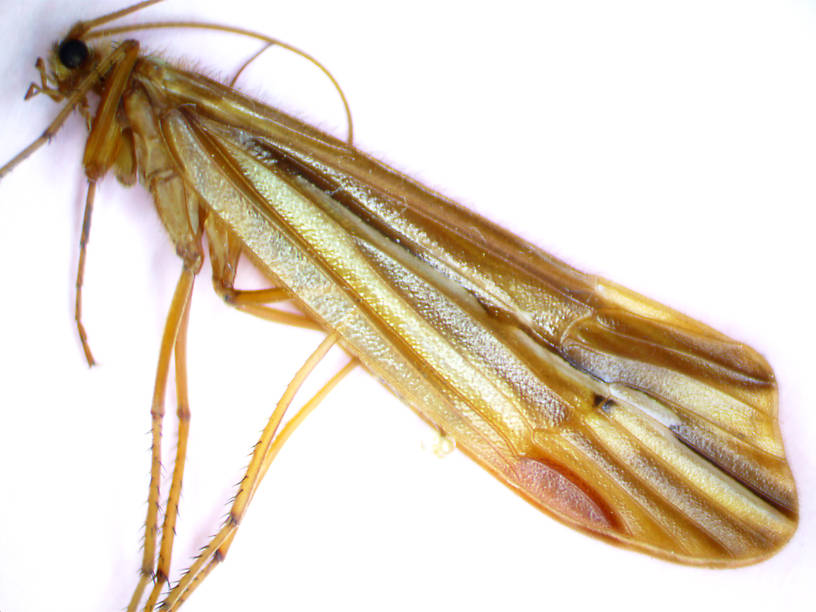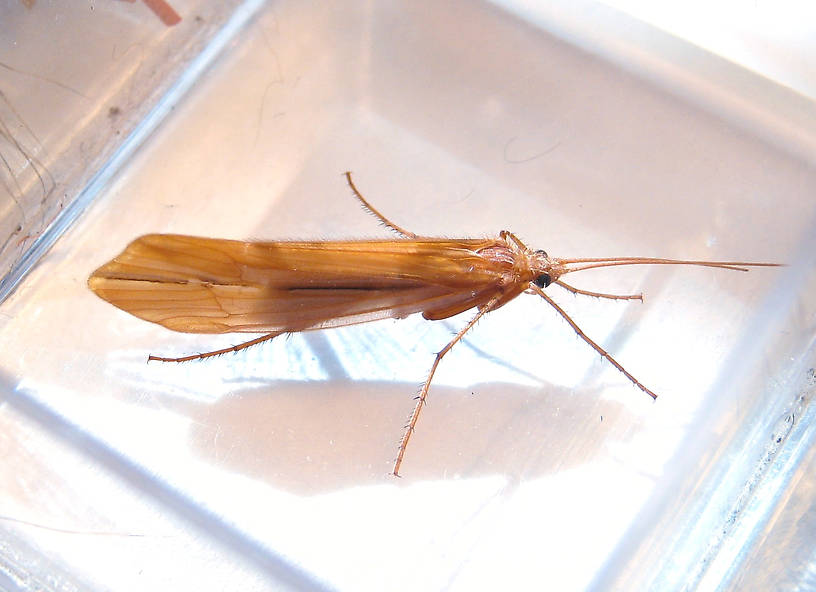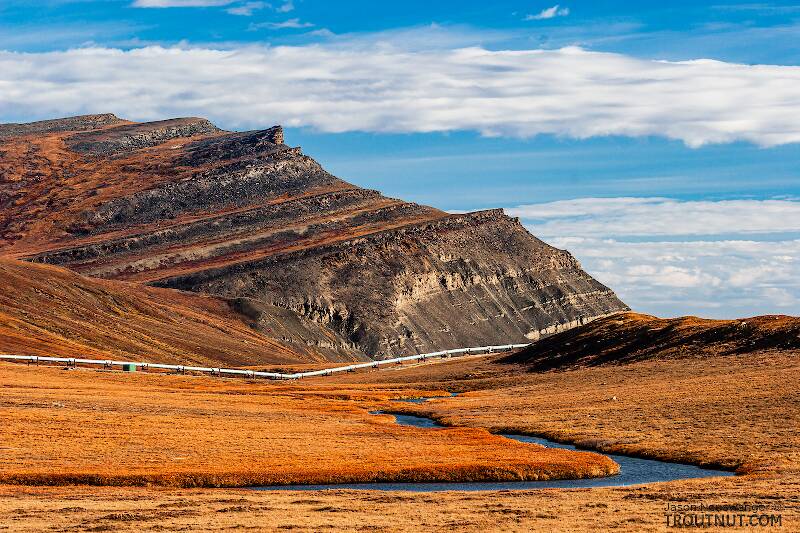
Salmonflies
Pteronarcys californica
The giant Salmonflies of the Western mountains are legendary for their proclivity to elicit consistent dry-fly action and ferocious strikes.
Featured on the forum

Troutnut is a project started in 2003 by salmonid ecologist Jason "Troutnut" Neuswanger to help anglers and
fly tyers unabashedly embrace the entomological side of the sport. Learn more about Troutnut or
support the project for an enhanced experience here.
Caddisfly Genus Psychoglypha (Snow Sedges)
These caddisflies may be important to the winter angler because they are one of the only insects around. Gary LaFontaine relays an interesting correspondence about this genus in Caddisflies:
I will keep an eye out this winter and hopefully collect some specimens to photograph.
Dr. George Roemhild explained to me how he finds these winter caddisflies in February and March: "They crawl up on the snowbanks, but when the sun hits their dark wings they melt down out of sight. That's how I collect them, by walking along looking for holes in the snow."
I will keep an eye out this winter and hopefully collect some specimens to photograph.
Where & when
In 117 records from GBIF, adults of this genus have mostly been collected during October (18%), April (15%), May (14%), September (11%), March (11%), November (9%), June (5%), and December (5%).
In 50 records from GBIF, this genus has been collected at elevations ranging from 34 to 11499 ft, with an average (median) of 5719 ft.
Genus Range
Larva & pupa biology
Diet: Leaf matter, algae, dead animals
Specimens of the Caddisfly Genus Psychoglypha
1 Male Adult

This Psychoglypha adult was found clinging to my garage door in the evening on April 9, 2013. It measures 21 mm in length, from the front of head to the end of wings. It is my hope that Creno will be able to identify it to species based on the image of its genitalia. However, if other images are required for a species ID, the specimen is available, so they can be easily taken. Thanks, Roger Rohrbeck, Mercer Island, WA.
1 Female Adult

This specimen was 22 mm.
Start a Discussion of Psychoglypha
References
- LaFontaine, Gary. 1981. Caddisflies. The Lyons Press.
Caddisfly Genus Psychoglypha (Snow Sedges)
Taxonomy
Species in Psychoglypha: Psychoglypha alascensis, Psychoglypha subborealis
12 species (Psychoglypha avigo, Psychoglypha bellus, Psychoglypha browni, Psychoglypha klamathi, Psychoglypha leechi, Psychoglypha mazamae, Psychoglypha ormiae, Psychoglypha pritus, Psychoglypha rossi, Psychoglypha schmidi, Psychoglypha schuhi, and Psychoglypha smithi) aren't included.


